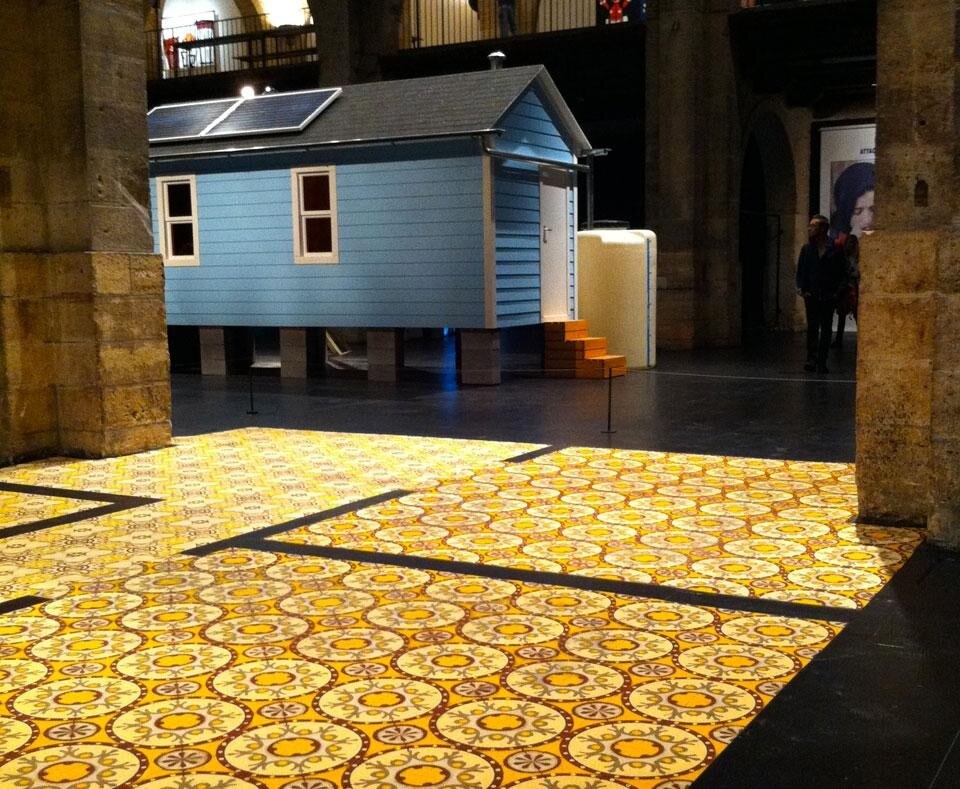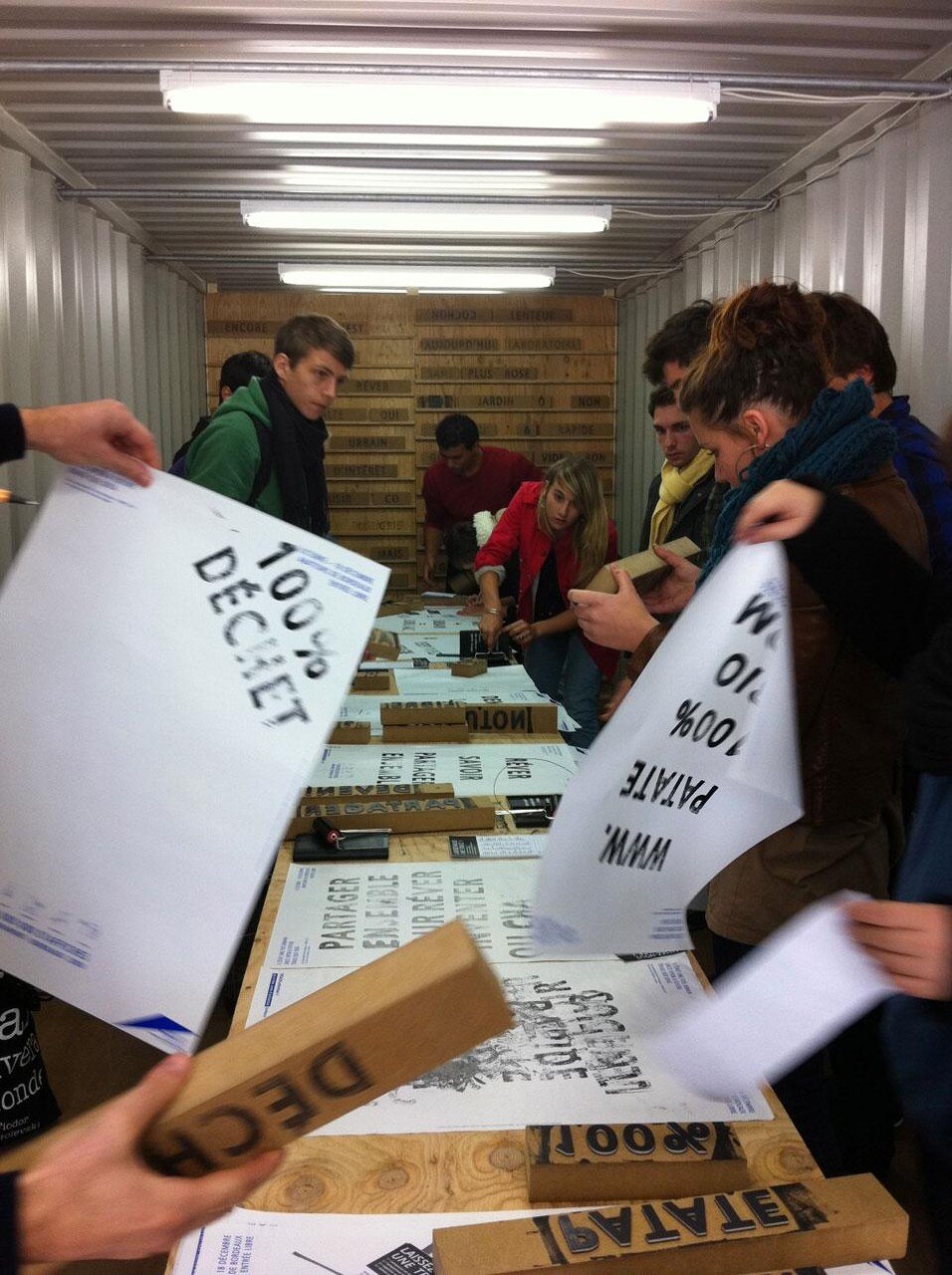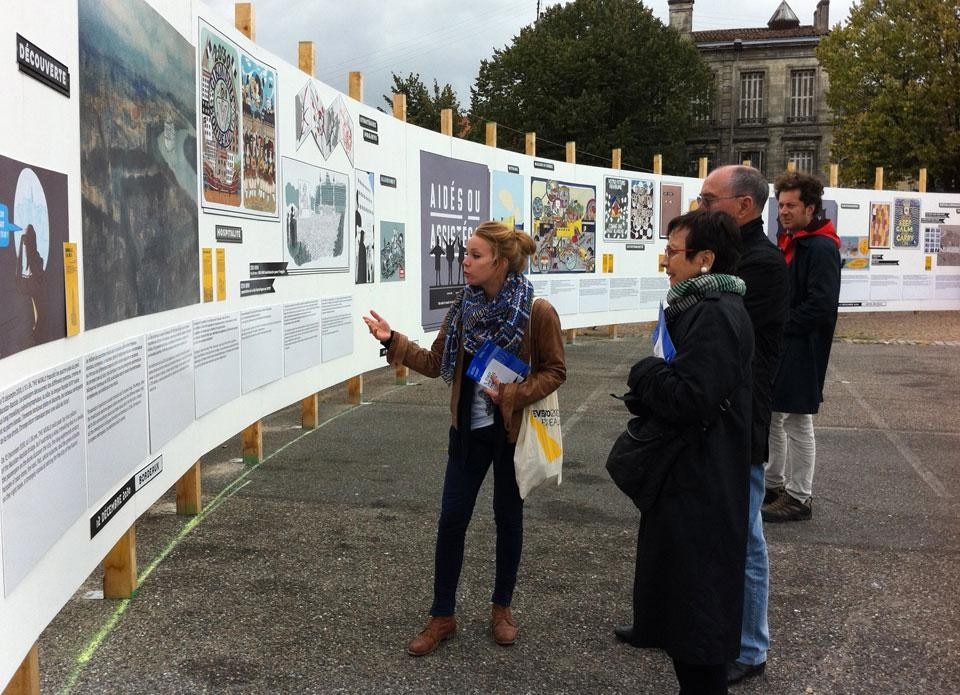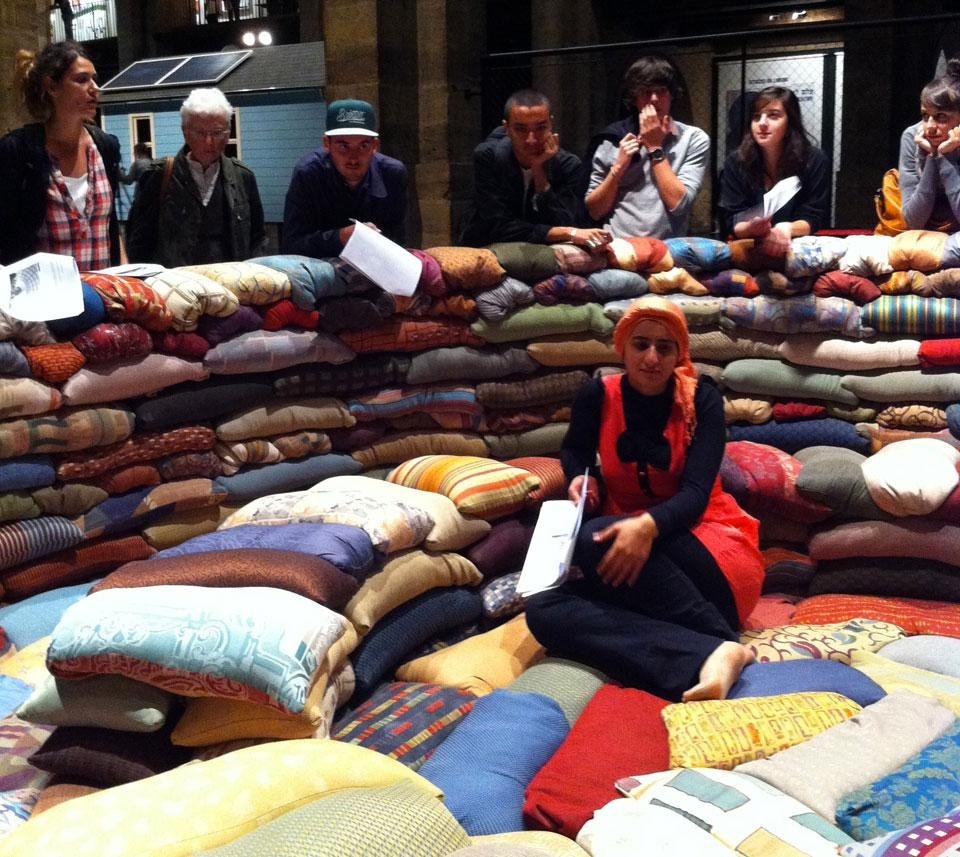Evento inhabits the city in the dimension of rendezvous. Spectacles and artistic events (performances, concerts and installations) occur around the city at different times of the day, in an urban-acupuncture process that, although extremely fragile and fleeting, mixes with city events and daily life, prompting new interpretation of spaces and fresh meanings for places. Evento appointments are dotted around the streets of Bordeaux, making the event itself a mesh of appearances, more often stumbled across or sought out than visited. Evento mixes constantly with the urban noise so you might watch a police demonstration and then the mobile worksite in rue Camille Sauvage or sometimes blend in with the public meetings among the stalls of a local market.

The key to the art/public (space)/city encounter lies in the clear distinction between art and social relations within their respective spheres but you feel something is lost in the dialogue between Evento and Bordeaux when interventions on the urban dimension, experienced as social and participatory, are a little too strained or affected and when the art overly compromises itself in the relationship with these city essences.

Evento mixes constantly with the urban noise so you might watch a police demonstration and then the mobile worksite in rue Camille Sauvage or sometimes blend in with the public meetings among the stalls of a local market.


These urban celebrations consist in creating space and giving time via everyday actions, shared silences, rhythms and the design of nature; they reawaken the city's understanding of time, sense of duration and defence of the meaning of space.
Sara Angelini

